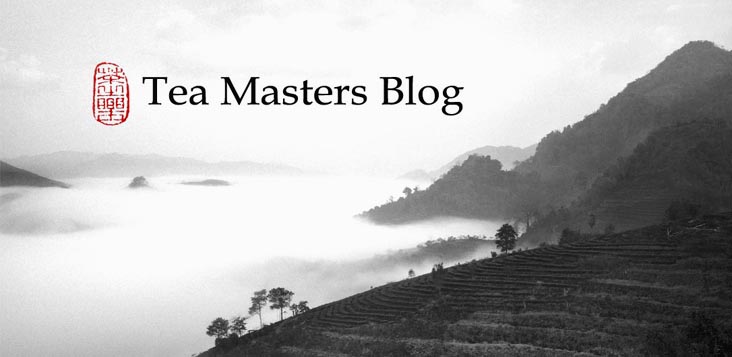 I'm back from a 3 days trip to the East Coast. On the way, between Su-Ao and Hualien, the views are amazing: high cliffs of dark green forest and rocks falling almost directly in the blue Pacific Ocean. These mountains make Taiwan's East Coast difficult to access. That's why, very few industries have settled here. It's mostly a local tourist destination well know for the Taroko Gorge, aboriginal tribes and delicious tropical fruits.
I'm back from a 3 days trip to the East Coast. On the way, between Su-Ao and Hualien, the views are amazing: high cliffs of dark green forest and rocks falling almost directly in the blue Pacific Ocean. These mountains make Taiwan's East Coast difficult to access. That's why, very few industries have settled here. It's mostly a local tourist destination well know for the Taroko Gorge, aboriginal tribes and delicious tropical fruits. In recent years, the East Coast has also known a tea revival thanks to several new red teas that have achieved rapid recognition. Many tea plantations in this wonderful setting try to make fully organic tea, like in the picture below. You will notice the presence of lots of grass between the trees. This shows that no herbicides were used on this plantation.
 What are they harvesting?
What are they harvesting? They are harvesting the bush's upper leaves that, with some luck, have been bitten by this Xiao Lu Yeh Cong (small green leaf insect) or tea jassid (Jacobiasca formosana Paoli). They are the same small insects that bite Oriental Beauty and Concubine Oolong. Their bites start the oxidation of the leaf early and gives a special flavor to these teas. Therefore, to have a chance to attract these tea jassids, no pesticides can be used on the fields. And when the farmer also only uses natural fertilizer, then the tea is fully organic.
They are harvesting the bush's upper leaves that, with some luck, have been bitten by this Xiao Lu Yeh Cong (small green leaf insect) or tea jassid (Jacobiasca formosana Paoli). They are the same small insects that bite Oriental Beauty and Concubine Oolong. Their bites start the oxidation of the leaf early and gives a special flavor to these teas. Therefore, to have a chance to attract these tea jassids, no pesticides can be used on the fields. And when the farmer also only uses natural fertilizer, then the tea is fully organic. Can you spot the insect on the leaf?

Below are examples of high grade tea buds and leaves that have been bitten by the insects. You see them during their wilting stage under the afternoon sky. You can see how the bites impact the leaves and how some leaves are more bitten than others.

Let's review the batch I selected.
.jpg) Harvested early April in the fully organic plantation of Da Ye Oolong (second picture above). Da Ye or big leaves Oolong is just the name of the cultivar. These dry leaves are not considered Oolong, because the oxidation is complete. The leaves are indeed quite big and contain few buds.
Harvested early April in the fully organic plantation of Da Ye Oolong (second picture above). Da Ye or big leaves Oolong is just the name of the cultivar. These dry leaves are not considered Oolong, because the oxidation is complete. The leaves are indeed quite big and contain few buds. The color of the brew is orange with brown tones. Very good clarity.
 Compared to last year's batch, this one is less aromatic, but sweeter, calmer and with more depth.
Compared to last year's batch, this one is less aromatic, but sweeter, calmer and with more depth. The scent reminds me of buttery cookies and melon. Scents of rich fruits and soil.
The sweet and sour opening taste quickly transforms into calm sweetness. The tea slips down the mouth and throat without encountering resistance. The mellow aftertaste lingers. Now, I also smell some of the roasting (baked bread).
.jpg) For the tasting in a competition set, I used 3 grams for 5 minutes. A sign of high quality, this tea performed very well during long brews. Beside the aroma, this is another amazing feature of these Taiwan reds: they can brew long and remain sweet like Oolongs (and unlike most non-Chinese reds I know). I recommend brews of several minutes with this tea. Use the weight of the tea to adjust the concentration you want.
For the tasting in a competition set, I used 3 grams for 5 minutes. A sign of high quality, this tea performed very well during long brews. Beside the aroma, this is another amazing feature of these Taiwan reds: they can brew long and remain sweet like Oolongs (and unlike most non-Chinese reds I know). I recommend brews of several minutes with this tea. Use the weight of the tea to adjust the concentration you want.Note: Thanks to closer ties with this farmer, I will try to obtain a more aromatic batch closer to last year's. New harvests were under way this weekend, as you can see.
Note 2: French readers may also want to refresh their memory with last year's article.








No comments:
Post a Comment